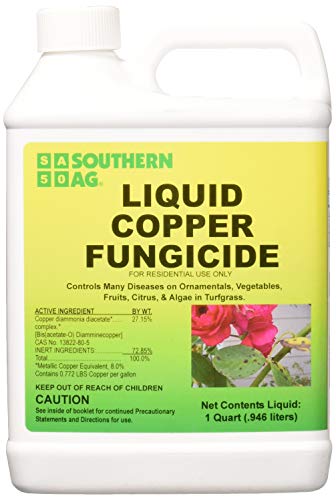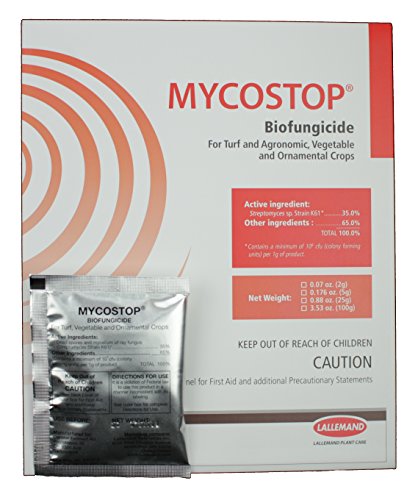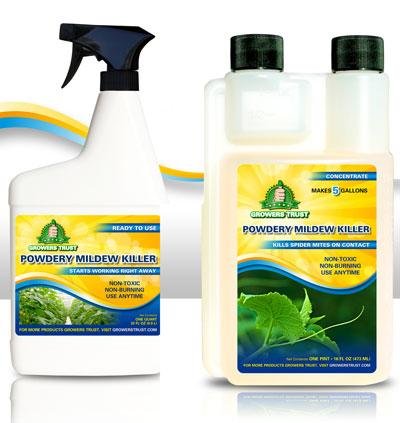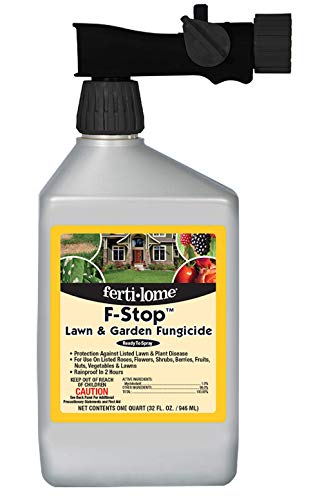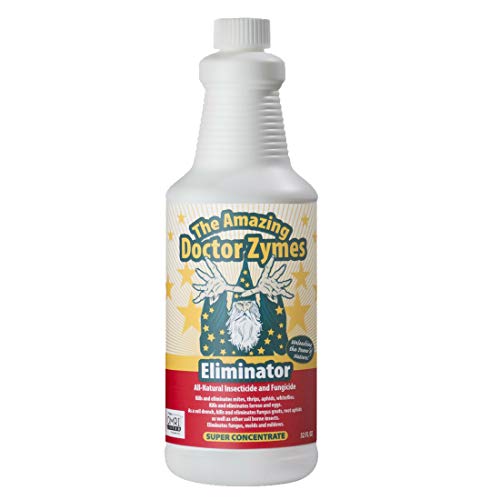How to get rid of mold: 10 way to kill mold on plants (Updated for 2023)

How to kill mold on plants?
#1 Liquid Copper Fungicide- Southern Ag (Chemical – Editors’ Choice)
This product controls diseases related to not only fungi but bacteria too. It contains copper diammonium diacetate complex about 27%. This product can be used on many vegetables, fruits, ornaments, and live oak. If you see any sign of leaf spots, blights or rust, liquid copper fungicide is the best choice for you. Mix about ½ ounce of the product with a gallon of water. Best used with hose-end sprayers. Spray this product as soon as possible when the first sign of the diseases occurs or spray it from the beginning so that white fuzzy mold on seedlings can be prevented. Spray once every 7-10 days for better results.
#2 Natural Industries Actinovate SP (Natural – Editors’ Choice)
It contains the powdered concentrated form of the patented beneficial bacterium, which is 100% water-soluble. The microorganism present in it is the Streptomyces lydicus. Foliar diseases like downy mildew and powdery can be controlled and surpassed by this product. For that, it is needed to be made into an aquatic solution and sprayed on the affected areas. If soaked in water and directly applied on the soil, it can control many soilborne diseases including fusarium, Rhizoctonia and many other root-decaying fungi. With the presence of this microbe, it increases the availability of the nutrients and minerals for the plant. Once they are settled in the soil, these microorganisms feed on the plant waste and in return secrete beneficial byproducts. The plants who have this microbe present in its soil have a higher growth rate and insurance. This biological mold controller is quite compatible with its synthetic and organic competitors.
Add ½ teaspoon in 1 gallon of water and spray the entire plant foliage thoroughly.
#3 Prestop WP Biofungicide
This product is completely organic, contains Gliocladium Catenulatum i.e. an antagonistic parasite of the cell wall of the plant pathogen through glucanase and chitinase enzymes. It settles in the roots and leaves of the plants, thus evacuating all the pathogen crowd. It can be applied in the form of drench, spray or directly incorporated in the soil. Many foliar and seed and root borne diseases can be prevented through Prestop. It is non-toxic and is on an equal effectiveness level as those of the chemical fungicides. This product can even kill bud mold after harvest.
Add 1 ounce of Prestop in 1 gallon of water and spray using a mist sprayer in the evening.
#4 Melaleuca peppermint concentrate- Naeterra
One of the most dangerous molds i.e. the black mold, with Mildew can be removed easily with the help of this product. It is a natural fungicide and can kill almost all the molds and mold spores around the home. It is quite environment-friendly and thus is harmless to plants, pets, and kids, with greater effectiveness. Tea tree oil is considered as the most effective remedy against the black mold. When combined with this product with water in 1:4 portions respectively, it makes the most effective spray. The presence of plant-based emulsifiers and peppermint oil increases its blending property with water and helps in better sitting on the plant surface. After making the solution, shake it well and spray it. After 15 min sprays another coat and scrubs the mold of. Finally, rinse it with tap water. It is advised to use protective masks and gloves when dealing with the molds.
#5 Powdery Mildew Killer- Growers Trust
This product completely kills and terminates all the mildew and molds from plants and vegetables and even those molds on pot plants. It is formed in a manner that it directly attacks the spores of the molds. Powdery mildew that can kill an entire crop can be cleared out with this. It helps in two main beneficial factors of the plant i.e. restoration and prevention. It stops the growth of the germ tube, spore germination and kills the pathogen cells. This product induces an imbalance of the potassium ions within the mycelium, this slows the spores’ germination. The solution of the product indirectly sprayed onto the affected area. Make a solution by adding 3 ounces of Powdery mildew killer in 1 gallon of water and spray your plants using a hand-held power sprayer.
#6 F-stop – Fertilome
This fungicide is mainly for the use of gardens and lawns only. It protects many plants including ornamented shrubs, fruits, roses, nuts, vegetables, berries and flowers from mold and many other damaging diseases with its just 1% Myclobutanil formula. The diseases it mainly fights against are Powdery Mildew, Leaf black spot, Red threat, Brown Rot, Rust, Blights, Brown patch scab, and Dollar spot. This product should be applied when the plant leaves are dried, or the temperature is suitable enough. Mostly it is advised to apply before disease favorable weathers like humid or cloudy weather. If it rains after the product is applied and wasn’t dried yet, apply it again. Moreover, if the temperature is more than 90F then do not apply it, since it may damage the plant. Apply it when the wind is calm, like in the morning especially. Add 2 ounces of F-Stop in 1 gallon of water to spray on all edible plants using a mist sprayer.
#7 The Amazing Doctor Zymes Eliminator
It’s environment-friendly and thus it has a great momentum to be used for medicinal plants, crops or other lawn plants. It can be used for indoor plants too. It eliminates all the insects, fungus, molds and mildew. This product can be used up to the day of harvest or on the harvest day too. Its eco-friendly solution won’t clog the stomata and contains no oil, also with no consequential residue. Fungal diseases like a Black spot on roses, Scab, Rust leaf spot, tip blight, Anthracnose, Downy Mildew, and twig, etc. can be easily healed and prevented with this. When spraying it, take into consideration the temperature and time of day. It is always advised to use it in the evening when the temperature is below 80F. The spraying solution should be made by using neutral tap water with a temperature between 70-98F. Often a question is asked: How to stop mold on drying buds? Even for that, this product serves the best too. Add 6 ounces of Eliminator in 1 gallon of water and spray on the affected plants thoroughly.
What is the mold?
Mold is a species that is neither considered in the animal or plant kingdom. It is a fungus since it does not take in energy through photosynthesis, and thus no energy from the sun is directly utilized by it. Instead, the sun radiation kills it. The only energy they get is from the organic debris on which they are growing. Their enzymes eat and decay the organic matter on which they are growing. These organic matters may include dead plants, animals and leaves, etc. The main requirement for mold growth is moisture. This moisture accumulation can be caused by humidity, water intrusion or condensation. Mostly molds only require the appropriate to stay wet for 24-48 hours before it starts growing. There is a mold named Xerophilic that can survive only with humidity. Other than moisture, the temperature requirement is there too. Most of them grow best in warm temperatures, whereas, there are still some molds present that can even grow at 2 degrees Celsius.
What does Black mold look like?
Stachybotrys chartarum is the name of the infamous black mold. This black mold can grow in houses and quite dangerous for humans and animals. It is advised whenever black mold is detected, remove it as soon as possible. It is greenish-black gelatinous in appearance. Also, seems slimy since there’s always a coat of water on top. But if its water supply runs out, it might appear to be powdery and dry. Moreover, there are many molds that might appear like the black mold, but to make sure what type of mold is it, a mold expert is duly required.
What does mold smell like?
Mold might cause toxic consequences to the inhabitants if it is one of the 14 infamous molds. The smell gives out to be musty if it is associated with the black mold or unpleasant like wet socks or rotten paper with other molds. Whenever molds eat, they release Microbial Volatile Organic Compounds (MVOC) that smells like there is something wet and has a pungent smell. Sometimes, the smell is also said to be meaty or earthy or alcohol fermentation smell.
What happens if you eat mold?
Eating mold will never kill you. As soon as a person digest it, the feeling of nausea and vomiting struck him, naming the food poisoning. If a person is allergic to it, then he may start having irritation in the throat, skin, eyes, etc. Though all the molds are not that harmful, there are some that can even cause cancer by producing toxic mycotoxins in your stomach.
How to clean mold?
If you want to clean mold through non-toxic home remedies, then below are some methods stated for you.
#8 Baking Soda Solution with Oil and Soap
White fuzzy molds on plants that can be killed by the bursting that little fungus by making an aquatic solution of the baking soda with the other components and then spray out on the affected areas. When it comes in contact with the fungus, it causes such a reaction that the cell wall of the fungus bursts out and thus kills the mold. The use of Oil and Soap helps it spreads evenly and stick effectively. For a one-gallon solution, 1 teaspoon of oil, 1 tablespoon of baking soda and 1 teaspoon of castile soap is mixed. This solution must be sprayed once a week to either kill the existing mold or to save the new sapling from getting infested.
#9 Dilute Milk Spray
Milk has the properties to weaken and diminish the white molds on buds or white mold on plants. But at the same time, if not used correctly, it can cause the growth of new molds too. To prevent it from happening always dilute solution of milk is utilized, in which the proportion of milk to water is 1:9. This remedy is applied on a weekly basis, so the re-growth of the fungus can be prevented.
How to kill molds?
Molds can be killed by the products mentioned above that are fungicides or through home remedies. Other than that, a few methods are written below:
#10 Cancrobium mold control
It is a professional formula that prevents the re-growth of mold and kills the already present mold. It contains no toxic chemicals like ammonia or bleach. This remedy is ideal for home-usage. It saves your home before any permanent damage may occur. Apply this solution in a thin layered form over the affected area and allow it to dry completely. Afterward, scrub the surface to clean the mold and then re-apply to save it from future destruction.
How to kill black mold?
If you see black mold in your house, then do not try to clean by yourself if you don’t know much. Black mold, when disturbed releases many toxic fumes, that can cause serious health issues. Professionals know how to clean it with a little disturbance only. It is even advised to leave your residence temporarily too while the mold is getting cleaned.
However, if you are still willing to do it yourself and want to know how to get rid of black mold? then ammonia might be the best choice for you. Before starting the job, wear safety gloves and mask. Make a 1:1 solution of ammonia and water and spray evenly on the contaminated areas. Then allow it to sit for 5-10 minutes and then scrub it with a brush or scrub and clean it afterward. Apply the coat again if required, or to save it from future infection.

